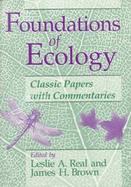Foundations of Ecology Classic Papers With Commentaries
- List Price: $49.00
- Binding: Paperback
- Publisher: Univ of Chicago Pr
- Publish date: 09/01/1991
Product notice
Returnable at the third party seller's discretion and may come without consumable supplements like access codes, CD's, or workbooks.
| Seller | Condition | Comments | Price |
|
bookruns
|
Acceptable
|
$11.08
|
|
BookReadingInc
|
Acceptable
|
$22.39
|
|
BookReadingInc
|
Good
|
$30.43
|
|
KuleliBooks
|
Acceptable |
$14.16
|
|
Goodwill of Colorado
|
Acceptable
|
$14.56
|
|
BooksRun
|
Acceptable
|
$15.41
|
|
readmybooks
|
Acceptable |
$22.61
|
|
Ergodebooks_N
|
Good |
$24.65
|
|
readmybooks
|
Good |
$30.13
|
|
HPB-Red
|
Good
|
$33.15
|
|
SurplusTextSeller
|
Good |
$33.58
|
|
h&hbooks24
|
Good
|
$37.65
|
|
SurplusTextSeller
|
New |
$41.96
|
|
Ergodebooks_N
|
New |
$45.24
|
|
TEXTBOOKHUT
|
Good |
$69.22
|
|
GridFreed
|
New |
$71.27
|
|
TEXTSHUB
|
Good
|
$73.66
|
|
Book Words
|
Good
|
$74.27
|
|
BOOKWORDS
|
Good |
$81.45
|

Please Wait

